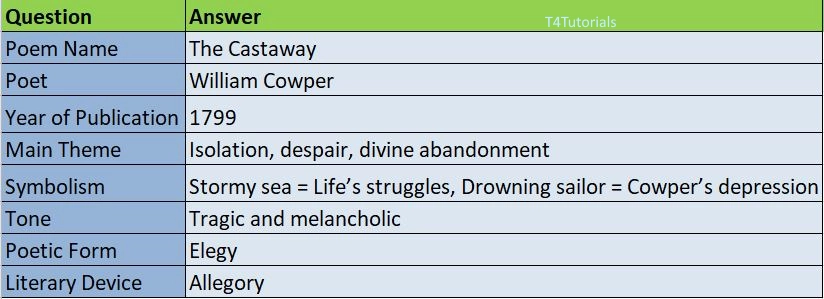Summary:
“The Castaway” is a deeply melancholic poem written by William Cowper in 1799, shortly before his death. The poem is inspired by an incident from George Anson’s sea voyage, where a sailor was washed overboard and left to drown.- The poem symbolizes Cowper’s own struggles with depression and despair, drawing a parallel between the drowning sailor and his own feelings of abandonment and isolation.
- The stormy sea represents the challenges and hardships of life, while the sailor’s helpless struggle reflects Cowper’s personal sense of being forsaken by God.
- The final stanza expresses hopelessness, as the speaker suggests that he too is lost, just like the sailor, but in a figurative sense—drowning in sorrow.
- The poem is written in elegiac verse, emphasizing its tragic and sorrowful tone.

10
Score: 0
Attempted: 0/10
Subscribe
| Question | Answer |
| Poem Name | The Castaway |
| Poet | William Cowper |
| Year of Publication | 1799 |
| Main Theme | Isolation, despair, divine abandonment |
| Symbolism | Stormy sea = Life’s struggles, Drowning sailor = Cowper’s depression |
| Tone | Tragic and melancholic |
| Poetic Form | Elegy |
| Literary Device | Allegory |